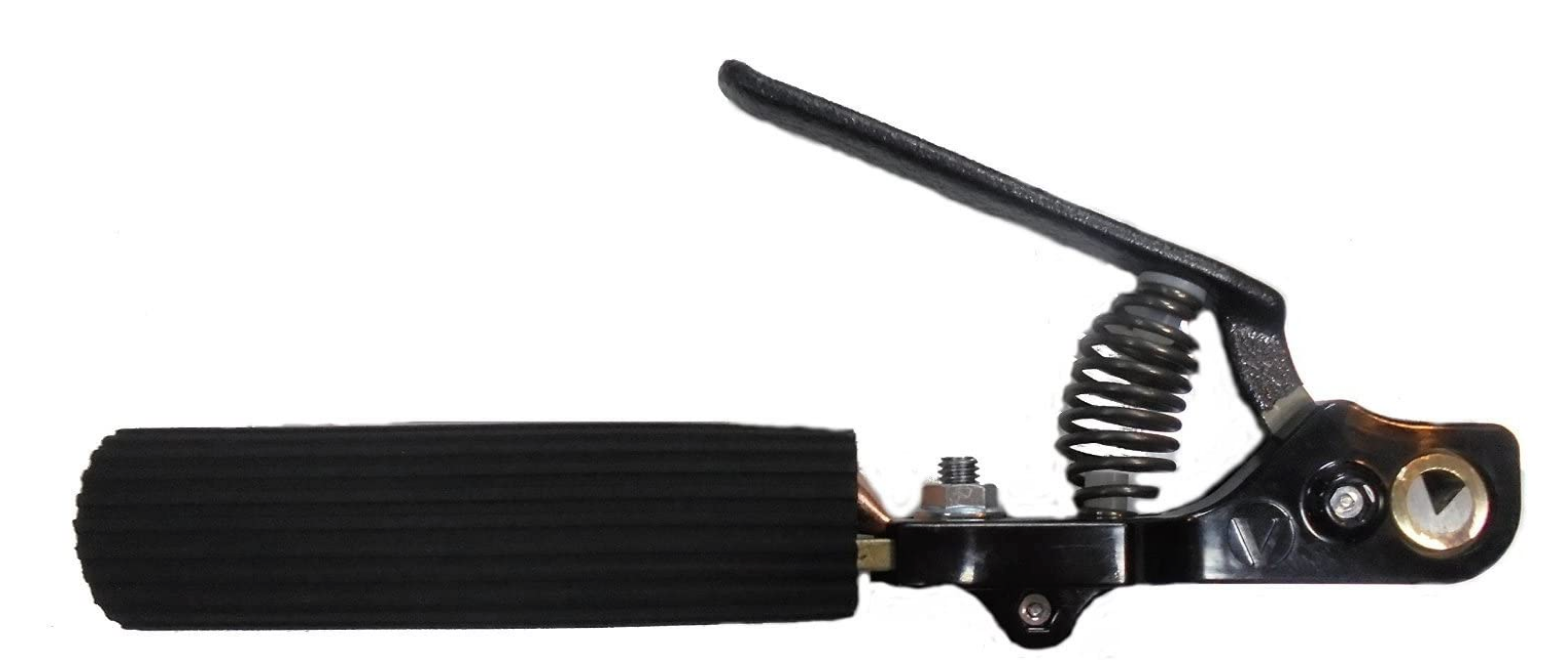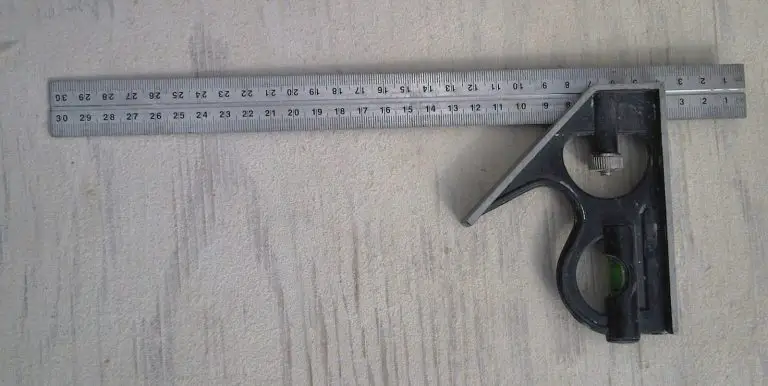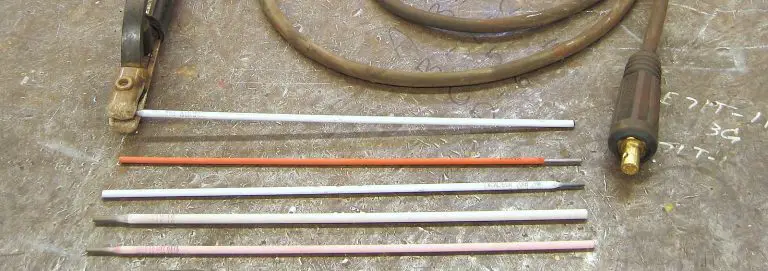Best Welding Stingers – Types Of Electrode Holders
This post contains affiliate links.
If you’re already into stick welding, you probably have a preference towards a certain type of “stinger”. These are electrode holders that grip the stick electrode firmly while the welding process is being performed (while transferring the necessary amperage to the rod).
Although these are smaller pieces of equipment, they are the connector that lets the current travel from your machine, through your leads, and to your electrode. There are many types of stingers on the market today, and they vary by design as well as their amperage rating. Welders that tackle heavy duty projects will need a stinger that can hold up to very high amperages.

If you overload your amperage rating and your stinger can’t keep up, there is the possibility of damaging your leads or melting your stinger. Leads can get very pricey (sold by the foot) so it’s important to make sure that your entire stick welding setup can hold up to your operations.
While there are complete lead packages on the market that include a stinger and a ground clamp, these are often subpar pieces of equipment. We prefer to buy leads by the foot, and select a stinger and a ground clamp that will fit our needs. Piecing it together allows for more customization. This will allow you to choose the length of your leads, and research a stinger that will last a long time.
Article Overview
This guide will cover the top stingers on the market, and should help you decide which one is best for your stick welding style. If you’re completing smaller projects in your garage, you may not need a large industrial stinger.
However, we recommend stingers that have a high amperage rating, just in case a newbie decides to jump into higher amperage applications down the road. You never know when you’ll have to pick up some larger 5/32″ rods for a bigger job.
With all the knockoff overseas brands on the welding market today, we like to focus on welding products that professional welders actually use. The stingers listed below can be found on rig trucks across the country – and have been trusted by welders for many years. You won’t see a professional pipeliner or ironworker with a $15 stinger on their rig – it just won’t happen.
Stinger V Insulated Electrode Holder
This is by far our favorite stinger ever produced. Many pipeliners and structural welders will say the exact same thing – they swear by them.
The unusual thing about these stingers is their insanely strong grip strength. Once you put the electrode in the “V”, it is nearly impossible to pull it out by hand. This means that you won’t have the electrode move around on you while you’re welding. You can also bend the electrode to your preferred angle once it is secured.
The spring mechanism is extremely strong and usually lasts for many years. This model is completely insulated, which means that it won’t “arc out” if it touches the steel that you are welding. Stingers that have exposed metal will cause sparks to fly when they touch your workpiece. The Stinger V has avoided this by using a completely insulated design.
There are no plastic parts on this electrode holder. This is pretty unusual compared to the other top models on the market. This (in our opinion) makes it by far the most bomb proof stinger ever produced.
The amperage rating on the Stinger V is about 300 amps, but it will handle any rod you throw at it. Welders rarely stick weld over 300 amps, so you can rest assured that this is a stinger you can grow into.
Lincoln Electric T300 Electrode Holder
This is one of the most classic stingers in the welding industry. It has been the choice of professional welders for a very long time; and before the Stinger V came out, it was considered the top choice (most often).
Although it is a great electrode holder with a similar spring to the Stinger V, it just isn’t built quite as rugged. The spring wears out prematurely at times, but the clamping pressure is plenty good – especially when it is newer. These generally last for about 2 years if used on a regular basis. They are more affordable than the Stinger V, which makes them a great mid range choice.
Welders have found that old, worn out T300s can also make good ground clamps (especially for pipe welding). Field welders often have their stinger of choice on their positive lead and a T300 on their negative lead.
Similar to the Stinger V, the amperage limit on this Lincoln is super solid. We have performed stick operations at over 300 amps, and the T300 did just fine.
The thick handle provides a very comfortable grip for most hand sizes, and we found that this electrode holder really shines comfort-wise for longer days on the job site.
If you are looking for a classic, well built stinger – the T300 is a great bet.
Tweco Tong Electrode Holder
Tweco has made high quality welding connectors and stingers for many years. Their Tweco connectors allow for quick changes and connections between leads, and welders have benefited a lot from this. They are also very well known for their wide range of stingers.
This is a high quality, more traditional stinger than the other offerings listed above. It has a bomb proof spring, and can withstand amperages above 300.
Although this stinger is fully insulated with high quality plastic, it is still just plastic. This electrode holder won’t withstand drops or falls as well as the Stinger V or the T300. In recent years, these hard plastic stingers have become a lot more popular, but they won’t withstand the tests of time as well as the stingers with mostly metal construction.
The one piece handle extends all the way to the jaw, which results in a simple and solid construction. These Twecos can last a long time and they are high quality – there’s no doubt about that. You’ll just have to be more careful to not drop it.
The 6 position jaw pattern allows the welder to angle the electrode based on their preferences. Positions like vertical uphill stick welds require the electrode to be in an upward position. The different slots in the jaws allow for any angle style. This contrasts with the Stinger V. The Stinger V requires the welder to bend the electrode to their desired angle (after the electrode is placed in the “V”.
Lenco 250 Amp Electrode Holder
This is a nice and affordable 250 amp option from Lenco. It is smaller than the models above, but it still gets the job done with ease. It features a shorter and stubbier profile with hard plastic construction.
This is a great option if you plan to take on heavier duty projects, but you are mostly just welding in the mid range of amperage settings. 250 amps will support most stick electrode sizes. If you are welding with 5/32 electrodes (one of the largest) then this stinger will do just fine. Lenco does state that it will run up to 3/16″ rods, but we haven’t put that to the test.
The spring is very strong and doesn’t wear out very easily. We found that it was manageable to get our fingers between the spring release and the grip portion. This makes it easier to choke up on stinger when you’re gripping it. These Lencos can also be attached to cables up to 2/0, so it will do just fine on a larger rig truck setup.
In terms of budget models that hold up to the test, this stinger takes the cake.
Tweco 250 Amp Electrode Holder
This is Twecos smaller stinger. Similar to the yellow “Tong” model, this features similar styling but in a more compact package. The grip is a bit smaller in diameter, while the spring clamp has even more clearance than the larger model. We really enjoy this space between the clamp and the grip – because it allows for an easier grasp on the electrode holder.
Models that have a narrow space between the grip and clamp can cause complications with usage. If you cant fit your fingers through, then it makes it hard to achieve a comfortable hand grip while welding. Although there are many ways to hold a stinger, we prefer more of a “handlebar” traditional grip.
Considering its affordability, this Tweco will allow entry level stick welders get into a good stinger package without having to break the bank. It is a well built electrode holder that even a novice welder can grow into over the years. Also, if you have larger hands – you’ll find that this model offers some of the best ergonomics.
Lincoln Electric “Twist” Electrode Holder
This 400 amp model from Lincoln consists of a different method of clamping. Instead of using a spring mechanism to hold your stick electrode, you actually twist the stinger instead.
Once you insert the bare end of your electrode into this stinger, you will twist the top which engages the clamping mechanism. Some welders love it, while others despise it. It is definitely a controversial style of stinger, but it has been around for quite some time.
The 400 amp rating is extremely robust, and will allow welders to burn just about any electrode they choose. Keep in mind, we rarely go over 250 amps even for 5/32″ electrodes, so the 400 amp offering is more than we would ever need.
This model is very well insulated and sturdy. You’ll have to decide for yourself if you enjoy the twisting mechanism or if you prefer the clamped models. I have used this style back when I was an ironworker – it wasn’t my favorite, but it got the job done.
Generally, all of Lincolns products can be trusted. They’ve been around since 1895, so they have the manufacturing process down to a science.
Lincoln Electric 300 Amp Electrode Holder


Although this model looks a bit stubby, it can hang with the rest of them at 300 amps. The short spring clamp allows for more grip options. Most stingers have clamps that are much longer, so it is nice to see a compact offering allowing for more hand room.
This electrode holder doesn’t have too many bells and whistles. It is just a sturdy, high powered model from Lincoln. It is very affordable considering the other name brand options, so if you’re planning out your setup and you’re on a tight budget, this is an amazing choice.
Having a lightweight stinger like this can reduce fatigue during the course of a long work day. The weight of your leads and a heavier stinger can get annoying after awhile.
This model receives good ratings year after year, and we haven’t had any issues with it.
Wrap Up
Since stick welding requires less gear than MIG or TIG, it is nice to invest in proper items from the get go. A good set of leads goes a long way, but having a nice stinger and ground will make your days more enjoyable.
Having a proper setup will ensure that you can weld for several years before needing any replacement products. Besides engine drive maintenance, basic stick welding is pretty straightforward once you get the hang of it.
We always encourage folks to read reviews and see what people are saying about different welding items. Price points are a factor, but reviews are paramount.
If you want to check out more info on stick welding, you can check out our stick archive page here.
Featured image credit : Stinger V (Amazon Images)














